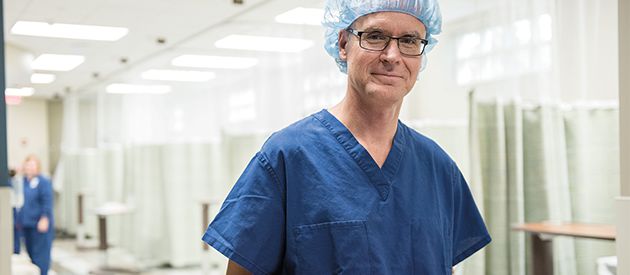Seeing Clearly at St. Cloud Surgical Center
At St. Cloud Surgical Center, we have some of the best and brightest Doctors of Ophthalmology of Central Minnesota on our team. Together, they care for patients with Cataracts, Glaucoma, Astigmatism, Optic Nerve problems, and most common eye conditions. Physicians from the following practices perform eye procedures at St. Cloud Surgical Center:
When Should You See an Ophthalmologist?
First, let’s begin by distinguishing the differences between an Ophthalmologist and an Optometrist. While both professionals work with your eyes, only an Ophthalmologist can perform medical and surgical interventions for eye conditions. An optometrist is an eye doctor that can examine, diagnose, and refer you to specialists, like those at St. Cloud Surgical Center, to treat your eye condition.
You should ask for a referral to an Ophthalmologist or make an appointment yourself if you are experiencing any of the following:
- Extreme Vision Changes
- Increased Eye Dryness
- Unexplained Eye Pain
- New Headaches or Pressure in Eyes
Eye Conditions Treated at St. Cloud Surgical Center:
Cataracts are the most common eye condition in the nation. Accounting for 51% of blindness worldwide, cataracts are an age-related condition that needs surgery to be corrected. Cataract surgery is a quick and painless process often performed at St. Cloud Surgical Center by all Ophthalmologists. For more information on Cataract Surgery, visit our blog post on all things cataracts.
Learn more about Cataract Surgery at St. Cloud Surgical Center on our blog!
Glaucoma is an optic nerve disease associated with pressure in the eye that results in loss of function and vision over time. Glaucoma usually progresses slowly but, if not addressed early on, can lead to permanent blindness. Optic Nerve Damage caused by Glaucoma is irreversible. However, there are things that we can do to prevent any further damage like drops, laser procedures, and even some surgical procedures in our office.
Astigmatism is a refractive error that occurs when the eye’s cornea or the lens inside the eye has mismatched curves. In a normal 20/20 vision eye, the lens is perfectly round like a basketball, but it is more like football in a person who has astigmatism. Astigmatism causes blurred vision and can usually be corrected with glasses, contact lenses, LASIK surgery (not performed at St. Cloud Surgical Center), or Cataract surgery to cancel out the football shape.
Corneal Lesion or a Corneal Ulcer is simply an open sore on the cornea typically caused by an eye infection. Other causes could include dry eye, eye injury, and contacts. You may have a Corneal Lesion if you are experiencing any of the following: eye inflammation, excessive tearing, blurred vision, white spot on the cornea, discharge, or sensitivity to light. If you suspect you have a corneal lesion, you should reach out to your doctor right away to prevent further eye damage or blindness.
Eyelid Surgery (Blepharoplasty) refers to a type of surgery that repairs droopy eyelids. As you get older, your eyelids may stretch, causing the muscle around them to weaken. You may be a strong candidate for eyelid surgery if you have sagging eyebrows, droopy under lids, or bags under your eyes. Removing excess tissue can improve vision and make the eyes appear younger and more alert.
Childhood Eye Conditions like lazy eye and tear duct obstruction can appear as children age. Untreated infection, refractive error, and misaligned eyes may cause harm to your child’s vision down the road. Lazy eye occurs when a child does not see correctly for an extended period. This is why eye exams are essential from an early age! Tear duct obstruction occurs in 20% of babies and results when tear ducts do not drain normally, causing watery, irritated, or infected eyes. Our team of doctors are well versed in childhood eye conditions and here to help.
Request an appointment with one of our eye specialists today to properly evaluate your vision and eye concerns:
https://stcsurgicalcenter.com/physicians-outpatient-surgical-services/ophthalmology/
For additional resources on eye health, please visit the following website:
https://www.aao.org/eye-health
